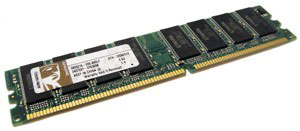What does RAM stand for? What does RAM do in computer? Should I upgrade RAM? How to choose a proper RAM? In this post, MiniTool Partition Wizard will give you answers. Just read on to get them.
What Does RAM Stand for?
RAM is short for Random Access Memory, which is a component that allows your computer to store data short-term for quicker access. As we all know, the operating system, apps, and various personal files are stored in hard drives.
When CPU needs to call data on hard drive for calculating and running, CPU will transfer the data into the RAM for calculating. Then, after the calculating is completed, CPU will transmit the result back to hard drive for save.

Why CPU not to calculate on hard drive directly? Some people may ask this question. The reason is that hard drive’s speed can’t be up to that of CPU, while RAM is much faster than any hard drives including HDDs and SSDs.
Then, why the data are not stored in RAM directly? One reason is that RAM is volatile. That means data is retained in RAM only when the computer is on, but it is lost when the computer is turned off. On the contrary, hard drive is non-volatile and can keep data for long time.
Another reason is that RAM’s price per GB is much higher than SSDs and therefore RAM often has small capacity. So far, the largest capacity of RAM is 32 GB, which is not enough for storing OS files, various app files, and all kinds of personal files.
From the above points, you can see RAM is a necessary component in computer. In addition, there are so many operations dependent on RAM, so the amount of RAM you have plays a critical role in the speed of your system’s performance.
How to Choose a Proper RAM for Your Computer?
In general, if the RAM goes wrong, your computer may have issues like slow operation speed, all kinds of dead screens, app not responding, etc. Sometimes, these issues can be solved by freeing up memory, but in most cases, they require you to upgrade RAM.
However, whether you should upgrade RAM depend on the RAM you have currently. The key point is how much RAM you have in computer. Then, you should figure out how much RAM do you need.
If you decide to upgrade RAM, you should know the RAM type installed on your computer. Then, you should buy the same type of RAM to replace the old RAM or work alongside the old RAM, because different types of RAMs may need different slots and they are not compatible with one another.
Then, when you purchase a RAM, you should also pay attention to the following aspects:
- Memory chip: At present, top manufacturers of memory chip are Samsung, Micron, and Hynix. Besides, memory chips are divided into following levels: Major Brand, eTT (Effectively Tested), uTT (Untested), FT (Fail Out), and Down grade. The Major Brand and eTT chips are better.
- Frequency and timings: The higher the memory frequency, to a certain extent, the faster speed the memory can reach. Then RAM timings represent the delay time in different working links. RAM frequency and timings affect the performance of the memory. In general, at the same frequency, the lower the timing, the better.
- Heat dissipation: Some RAMs come with metal heat sink, for example RGB RAM. When it comes to the DDR4 era, the higher the memory frequency and the faster the speed, the more heat the RAM generates. The heat dissipation design can protect the internal flash memory particles and capacitors, and make the appearance look more personalized.
If you choose a proper RAM, you can then install it by following the post: How to Install RAM in Your PC – Here’s a Complete Guide.

![Windows 10 High Memory Usage [Causes and Solutions]](https://images.minitool.com/partitionwizard.com/images/uploads/2019/06/windows-10-high-memory-usage-thumbnail.jpg)
User Comments :